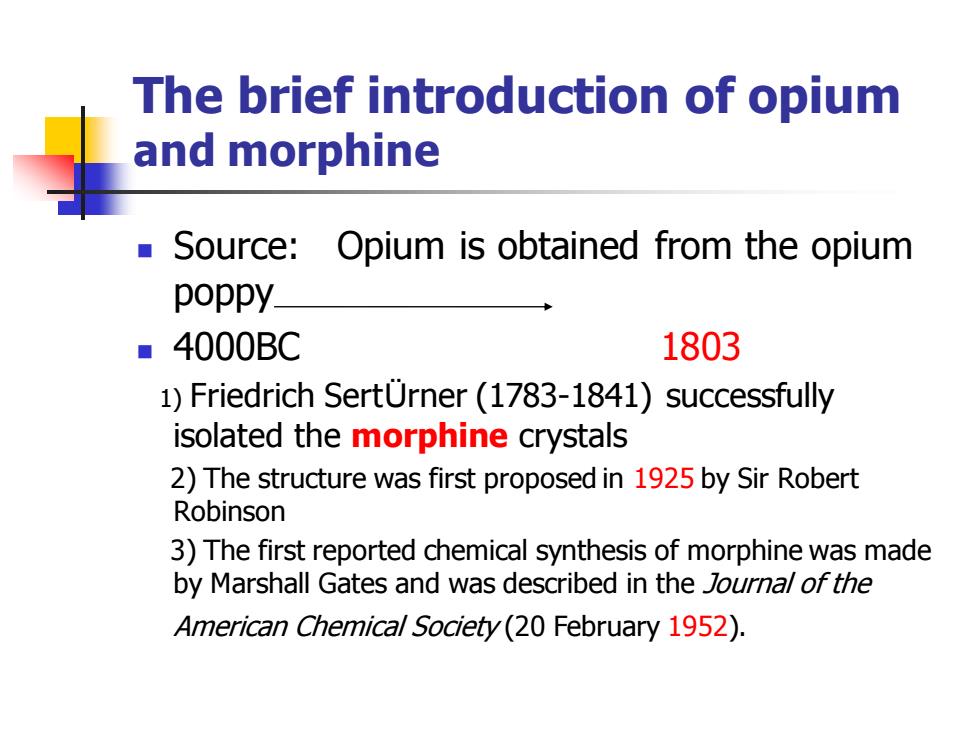
The brief introduction of opium and morphine Source:Opium is obtained from the opium poppy_ ■4000BC 1803 1)Friedrich SertUrner(1783-1841)successfully isolated the morphine crystals 2)The structure was first proposed in 1925 by Sir Robert Robinson 3)The first reported chemical synthesis of morphine was made by Marshall Gates and was described in the Journa/of the American Chemical Society(20 February 1952)
The brief introduction of opium and morphine ◼ Source: Opium is obtained from the opium poppy ◼ 4000BC 1803 1) Friedrich SertÜrner (1783-1841) successfully isolated the morphine crystals 2) The structure was first proposed in 1925 by Sir Robert Robinson 3) The first reported chemical synthesis of morphine was made by Marshall Gates and was described in the Journal of the American Chemical Society (20 February 1952)
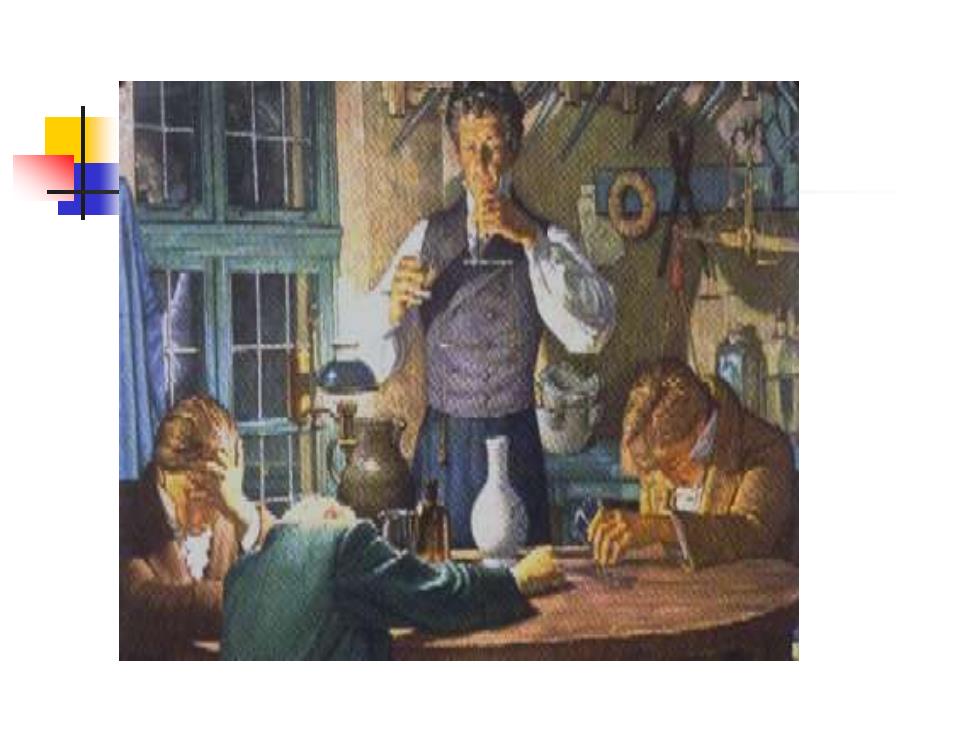
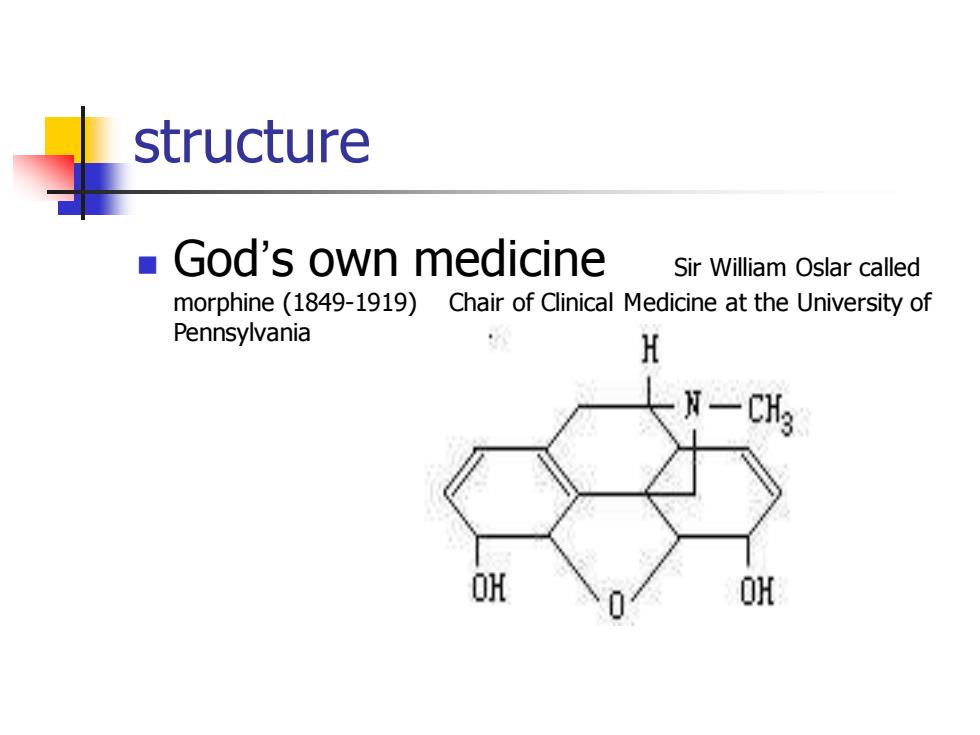
structure God's own medicine Sir William Oslar called morphine (1849-1919)Chair of Clinical Medicine at the University of Pennsylvania H OH OH
structure ◼ God’s own medicine Sir William Oslar called morphine (1849-1919) Chair of Clinical Medicine at the University of Pennsylvania
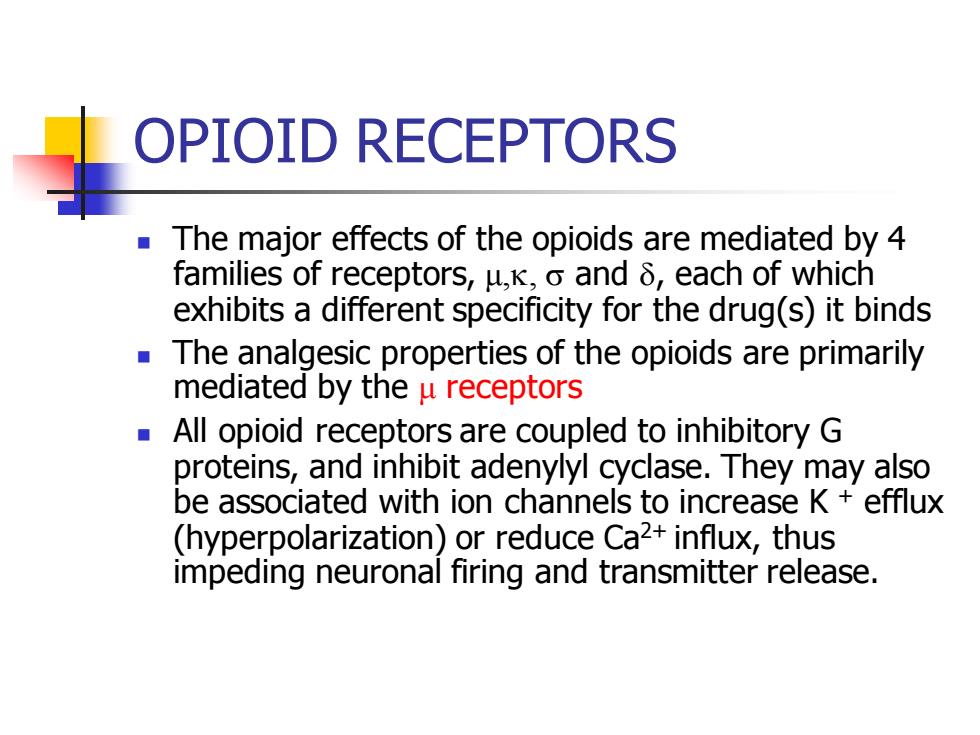
OPIOID RECEPTORS The major effects of the opioids are mediated by 4 families of receptors,u,o and 5,each of which exhibits a different specificity for the drug(s)it binds The analgesic properties of the opioids are primarily mediated by the u receptors All opioid receptors are coupled to inhibitory G proteins,and inhibit adenylyl cyclase.They may also be associated with ion channels to increase K+efflux (hyperpolarization)or reduce Ca2+influx,thus impeding neuronal firing and transmitter release
OPIOID RECEPTORS ◼ The major effects of the opioids are mediated by 4 families of receptors, μ,, and , each of which exhibits a different specificity for the drug(s) it binds ◼ The analgesic properties of the opioids are primarily mediated by the μ receptors ◼ All opioid receptors are coupled to inhibitory G proteins, and inhibit adenylyl cyclase. They may also be associated with ion channels to increase K + efflux (hyperpolarization) or reduce Ca2+ influx, thus impeding neuronal firing and transmitter release
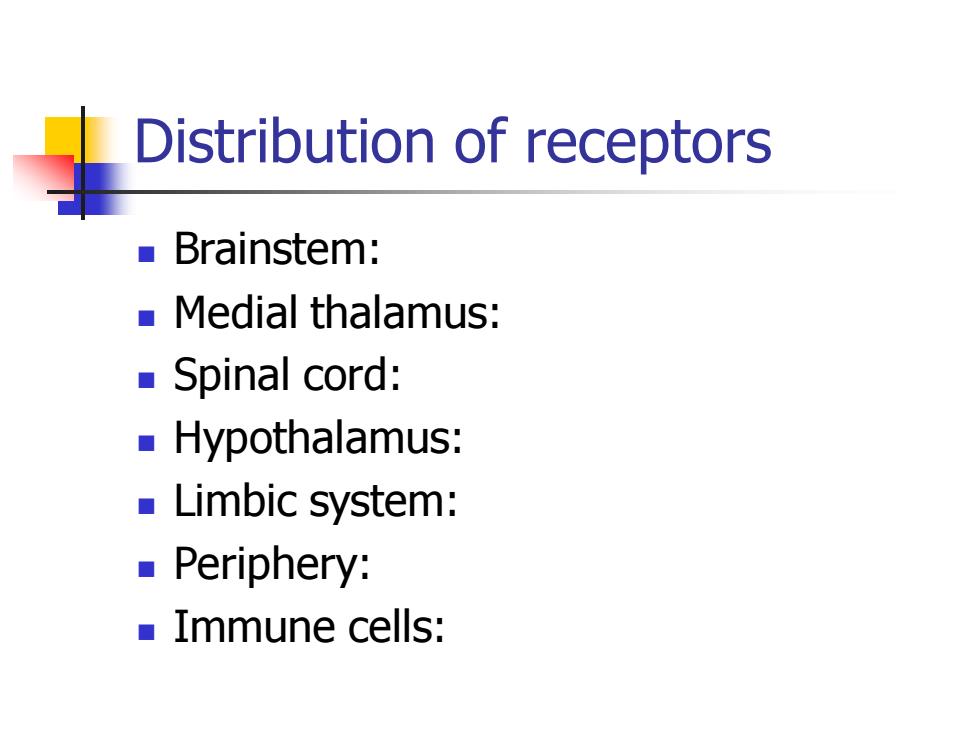
Distribution of receptors Brainstem: Medial thalamus: Spinal cord: ■Hypothalamus: ■Limbic system: Periphery: ■Immune cells:
Distribution of receptors ◼ Brainstem: ◼ Medial thalamus: ◼ Spinal cord: ◼ Hypothalamus: ◼ Limbic system: ◼ Periphery: ◼ Immune cells: